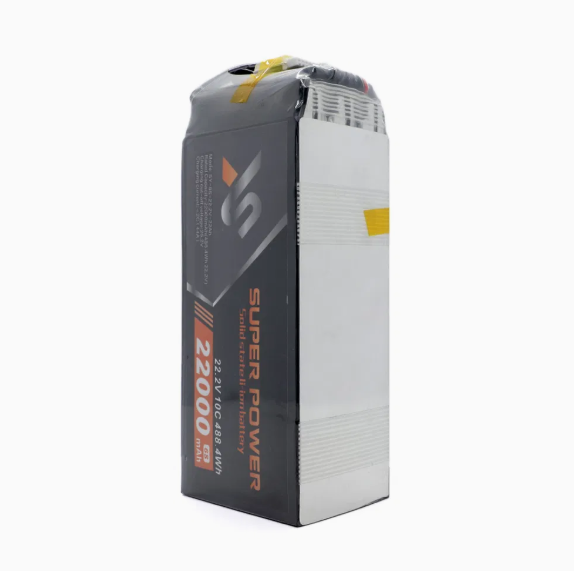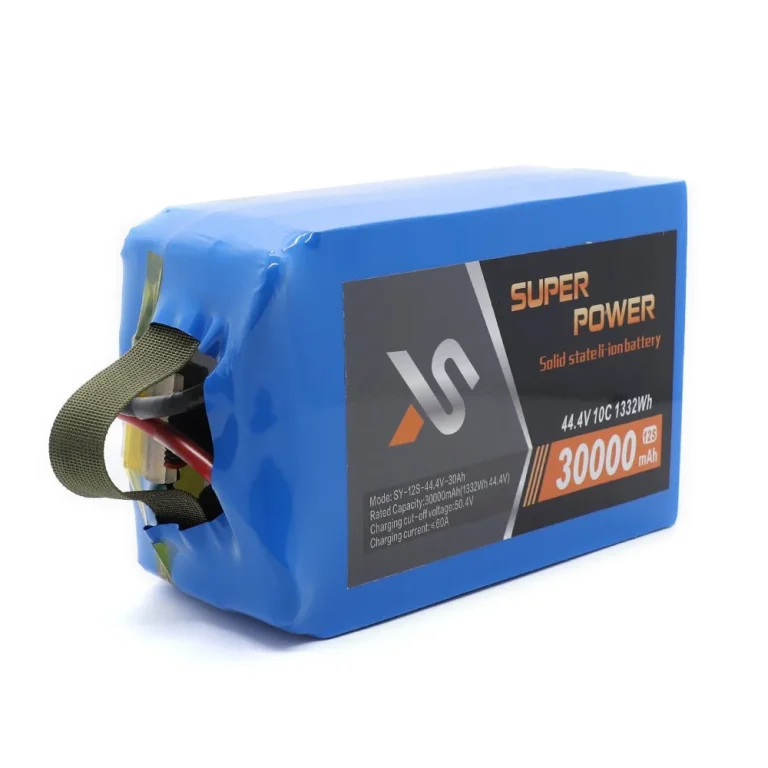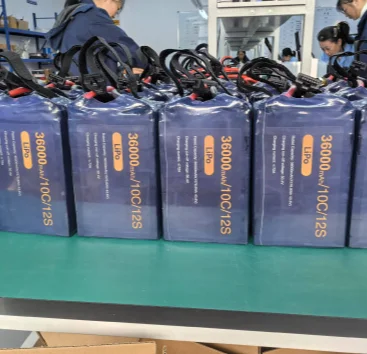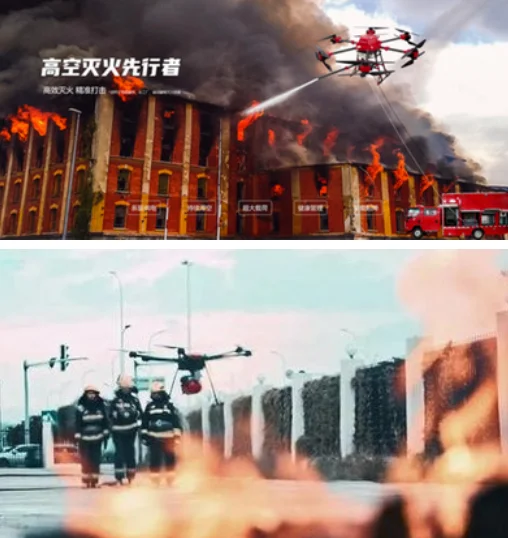What Is the Low-Altitude Economy?
Defining the Vertical Frontier
The low-altitude economy involves the airspace below 1,000 meters. Drones and other flying machines work here. This area is changing deliveries, city air travel, and factory checks. From last-mile delivery drones to emergency response UAVs, improvements in drone battery tech are crucial to reaching its full capabilities.
Key Drivers of Growth
The worldwide low-altitude drone market, worth more than $500 billion, is growing fast because of:
- Government Rules: Rules like the FAA’s Part 107 support business drone use. China’s low-altitude airspace changes do the same. These lead to broad use.
- Smart Tech and Automation: Self-flying features improve speed. They also boost safety and cut costs. Drones can do tough jobs with little human help.
- Eco Rules: Governments want green energy options. This boosts the need for powerful drone batteries. These batteries are earth-friendly and cut harm to nature.
A Brief History of the Low-Altitude Economy
From Military Roots to Civilian Boom
Drones started as spy tools in the military, especially during the Vietnam War. Later, costs got cheaper. Sizes got smaller. This led to many uses in everyday life. Examples include farming and checking buildings. Now, UAVs are key in fields needing accuracy. They also help with quickness and growth.
The 2020s: Decade of Democratization
Recent advancements have made drone technology more accessible:
- Cheaper Costs: Better battery efficiency cuts running costs. This makes drones useful for small shops. Big companies benefit too.
- Rule Changes: Standard license steps make drone use easier for business. This widens their use in different areas.
- Building Investments: Special drone paths are popping up worldwide. City air travel areas are too. These set up smooth air delivery systems.
Why the Low-Altitude Economy Needs Advanced Drone Batteries
The Energy Density Imperative
Energy density affects flight time. It also affects how much drones can carry. Delivery drones need high energy density batteries. eVTOLs do too. These batteries help them work better. They also reduce idle time and let them fly farther. There’s demand for longer-lasting batteries. This pushes new ideas in battery science.
Safety vs. Sustainability Balancing Act
Lithium-based batteries can catch fire. So, they need strict safety steps. Solid-state options have parts that don’t burn. They provide a hopeful fix. They make things safer and longer-lasting. Scientists are working on batteries that break down naturally. These batteries still perform well.
What Kind of Drone Battery Powers the Future?
Beyond LiPo: Emerging Chemistries
New battery types are changing UAV capabilities:
- Lithium-Sulfur (Li-S): They weigh less than Li-ion. They have more energy. They are cheaper to make.
- Solid-State: They offer better safety. They last longer. They use energy more wisely.
- Hydrogen Fuel Cells: They give longer flight times for work UAVs. They are perfect for far-off tasks.
The Customization Edge
Taixing Shengya Electronic Technology Co. provides custom battery solutions. They offer options for plug types. Branding and exact energy setups are also available. These fit special UAV needs. Our know-how ensures compatibility with different drone types. This improves flight performance and reliability. Contact us to explore bespoke solutions.
Breaking Down Drone Battery Power: Energy Density Series
High Energy Density 275Wh/kg Series: The Backbone of Modern UAVs
These batteries are used in farm drones. They help with long air checks. They also assist with crop watching. This makes farming smoother and more exact.
320Wh/kg Series: Bridging the Gap for Mid-Range Logistics
These batteries are great for delivering medical goods. They provide steady power in far-off areas. They also work in hilly regions where drones are badly needed. They maintain steady power in different situations. This makes them priceless for emergency teams.
330-340Wh/kg Series: Pushing the Boundaries for Heavy-Lift Drones
Firefighting drones carry 20kg+ loads. They need these big batteries. The batteries help them drop water from the air. They also support search-and-rescue jobs. These batteries ensure strong UAVs work well. They function effectively in tough places.
270Wh/kg High-Voltage (4.35V) Series: Speed Over Endurance
These high-voltage batteries are made for racing drones. They are also for emergency UAVs. They allow quick speed-ups. They enable fast reactions in key moments. Their light build improves quick moves. They do this without losing strength.
Drone Battery Types: From Legacy to Cutting-Edge
Lead-Acid Batteries: Why They’re Obsolete for Modern Drones
Lead-acid batteries have only 30Wh/kg energy density. They are too heavy. They are also weak for today’s UAV uses. They charge slowly. They need a lot of upkeep. This makes them less useful for current air tech.
LiPo Dominance: Pros, Cons, and Safety Protocols
Lithium-polymer (LiPo) batteries offer a better mix of weight, energy, and power. But they need good heat control. This stops swelling and fire risks. Smart battery management systems (BMS) help lower risks. They watch voltage and temperature in real time.
The Future of Drone Battery Innovation
Solid-State Breakthroughs: Safer, Lighter, Faster-Charging
Companies like Taixing Shengya Electronic Technology Co. are making solid-state batteries. These are designed for UAVs. They improve performance and safety. These batteries eliminate risky liquid parts. This cuts fire dangers. It also makes them last longer. They hold charge better.
AI-Optimized Battery Management Systems (BMS)
Smart data tools extend battery life. They prevent breakdowns. They do this by optimizing charge cycles. They also spot early wear signs. AI-powered battery checks improve reliability. This makes drone fleets cheaper to run. It also makes them more resilient.
Swappable Battery Networks: The “EV Model” for Drones
New companies are setting up battery-swap stations. These are for city drone operations. They reduce downtime. They ensure continuous flight capability. This approach is changing industries. These industries use drones frequently. Examples include online shopping and fast medical deliveries.
FAQs About Drone Batteries
1. What’s the average lifespan of a commercial drone battery?
Typically, they last 300-500 charge cycles. This depends on the battery type and usage.
2. Can extreme temperatures damage drone batteries?
Yes, LiPo batteries lose over 20% capacity below 0°C without preheating. Excessive heat can accelerate chemical degradation. This shortens battery life.
3. How do high-voltage drone batteries improve performance?
Higher voltage reduces current draw. This minimizes heat and extends motor life. It allows drones to maintain stable power output under heavy loads.
4. Are biodegradable drone batteries feasible?
Research is ongoing. Sodium-ion and organic flow batteries show potential. They are sustainable alternatives that balance performance with eco-friendliness.
5. What’s the #1 factor in choosing a drone battery?
Match energy density to the mission. This could be for endurance, payload optimization, or rapid deployment.
For tailored drone battery solutions, contact us at Taixing Shengya Electronic Technology Co. to find the right power source for your UAV operations.












